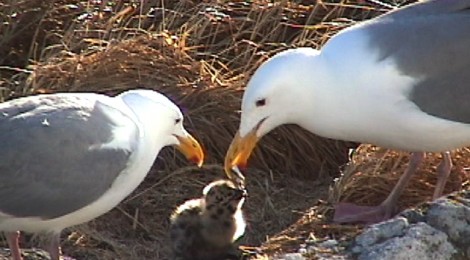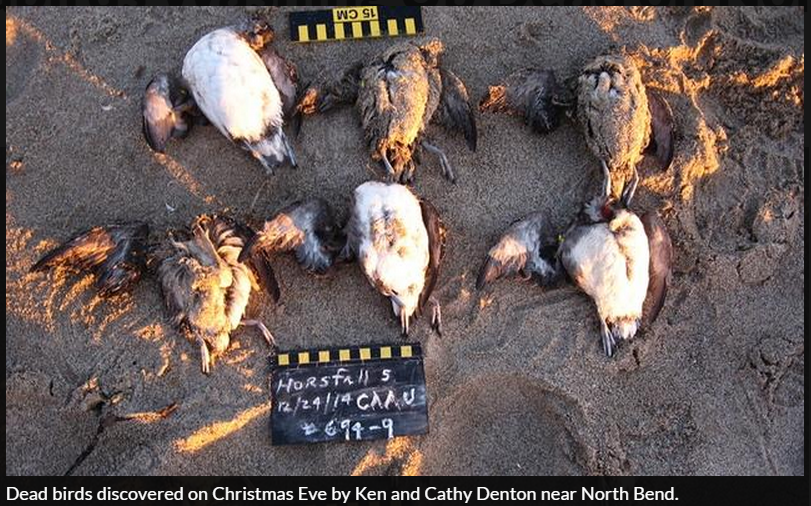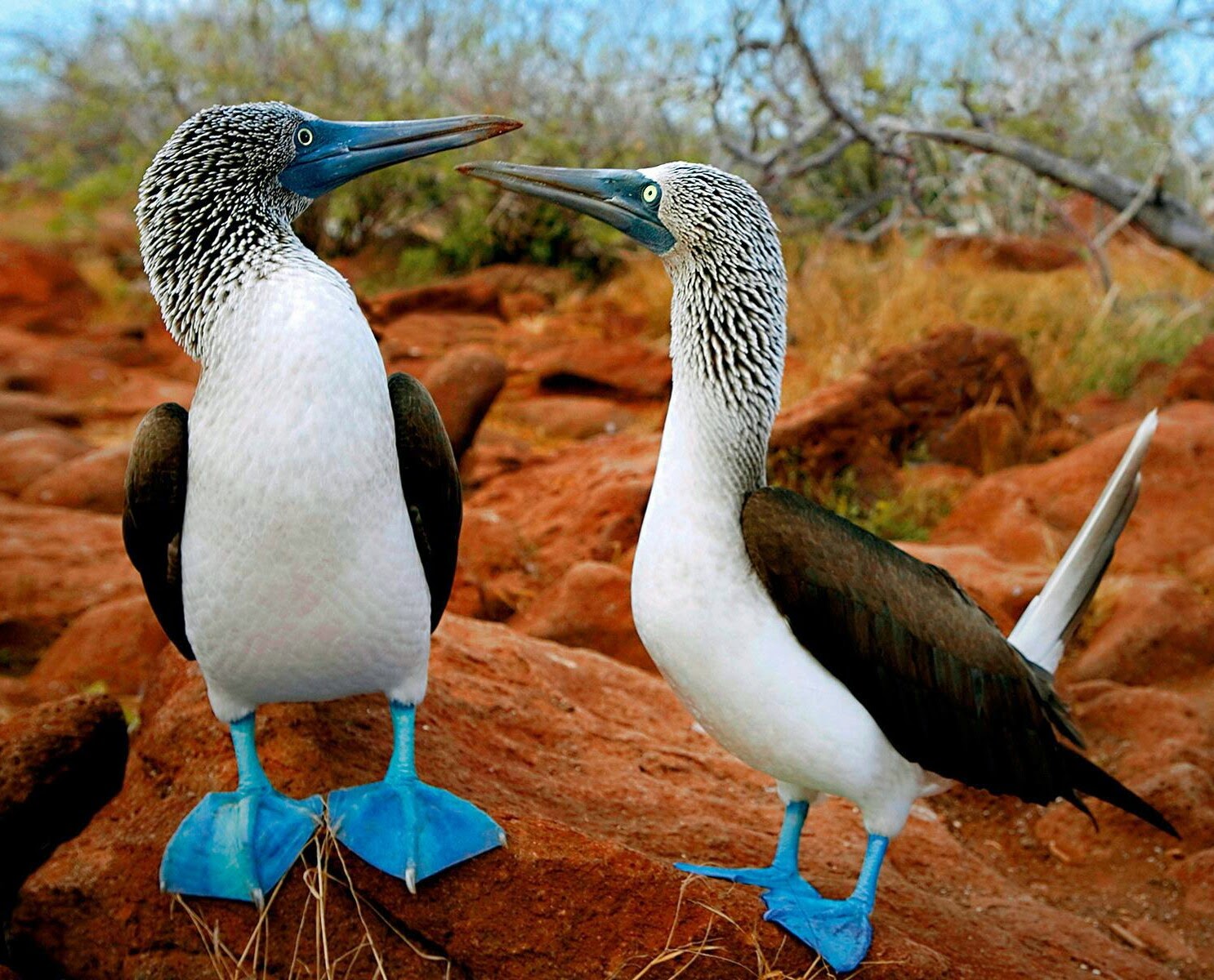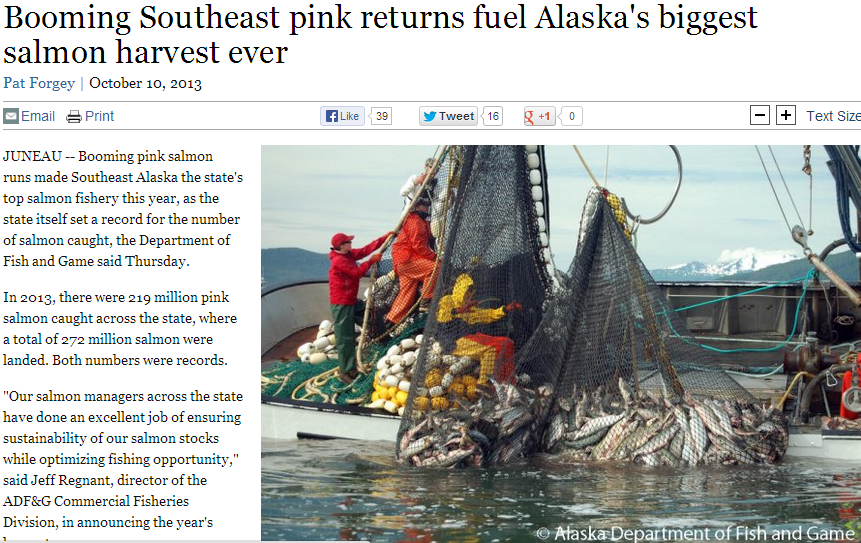
Seagulls Starving At Sea On Pacific Coast
Seagull populations have been crashing on the West Coast of North America according to a new report that say’s they are starving to death as their vital ocean pastures become blue deserts.
More than 50% of the seagulls have disappeared since just 1980! The report says the picture is far worse for other sea birds like murrelets and grebes whose populations have dropped by 90%.
We can help! (Read on for a couple of minutes of gloomy details or click the link to jump right to the solution that will bring back the birds.)
The number of seagulls in the on the coast of British Columbia and in the Salish Sea is down by 50 per cent from the 1980s according to a report published by University of British Columbia researchers who declare the decline reflects a collapse of ocean pasture food chains. But it’s not just the beautiful raucous white gulls, a hallmark of nearly every seascape piece of art, that are in danger of extinction other species of sea birds are in even worse shape.
This new report dovetails with other reports of seabirds in peril all along the west coast of North American and indeed everywhere in the world. In January of this year (2015) researchers in Washington state reported on hundreds of thousands of seabirds dead from starvation that have been washing up on beaches from Alaska to California.
A sister report ties the collapse of ocean pastures and sardine production to disappearence of the iconic Blue Footed Booby.
The Canadian researchers collected 100 years of data on population numbers of Glaucous-winged Gulls, the most common seagull species found in the Lower Mainland, Victoria, Nanaimo and elsewhere in the region. They found that the reported population of gulls showed a gradual increase beginning in the early 1900s, but started a cataclysmic drop after the mid-1980s, with their work pointing to diet as a key factor in the decline of the bird’s health and numbers.
“These birds are the ultimate generalist — they can eat whatever’s around,” says the study’s lead author Louise Blight. “If they are experiencing a population decline, the gulls may be telling us that there have been some fairly profound changes to local marine ecosystems.”
Gulls in the wild naturally rely on almost a purely marine diet, largely eating small fish and shellfish, but over the time of the study they are believed to have included into their diet more foods found on land, especially garbage from municipal dumps and earthworms from newly created agricultural lands that formerly were forested.
“They’re presumably turning to land-based prey sources because the things they prefer to eat are less available,” says Blight.
There are now both fewer forage fish and a lower diversity of these fish in coastal waters than there was prior to collapse of ocean pasture productivity and industrial fishing. The gulls need the richness of fish in their diet to breed successfully.
Gulls are an indicator of our coastal marine ecosystems, says Blight
We need to be restoring ocean ecosystems and that will go a long way to restoring fish populations, we need to Bring the Fish Back.
Study co-author Peter Arcese, FRBC chair of conservation biology in the Faculty of Forestry, says reductions in marine food abundance and quality help explain why the population of two other bird species in the region, Marbled Murrelets and Western Grebes, have declined by 90 per cent since the 1950s and 70s, respectively.
“Our studies of marine bird populations in the Salish Sea show that restoration and management plans for the region can be improved by incorporating historical information on the causes of ecosystem change,” says Arcese.
The study “A century of change in Glaucous-winged Gull (Larus glaucescens) populations in a dynamic coastal environment” was published earlier this month in The Condor: Ornithological Applications.
We can help by replenishing and restoring our ocean pastures and bring back the birds!
While it is necessary to report on the doom and gloom as academics most commonly do. It is usually up to pioneers in the world to develop and deliver solutions to those problems. This difference between talking and doing has been long noted in society.
So here is what we can DO! In my 2012 ocean pasture restoration project in the NE Pacific in the Gulf of Alaska we replenished missing vital dust to a 50,000 km2 ocean pasture far offshore. The pasture turned from blue to green and all manner of sealife came to it to feed. The great whales arrived, blues, fins, seis, sperm whales, and orcas not counted in ones or twos but counted in groups numbering by the scores. Seabirds that before the ocean pasture bloomed were seen only in ones or twos rarely each day in the dawn moring light surrounded my research ship by the thousands with joyous bird song so loud it almost drowned out the roar of the ships mighty diesel engines.
The very next year in nearby Alaska the catch of Pink salmon was projected by fisheries managers to be a good one of 50 million fish caught. Instead 226 million ocean pastures fed Pink salmon swam into the nets of Alaskan fishermen, the largest catch in all of history. More than 100 million servings of that incredible ocean pasture salmon bounty is now being fed to America kids in USDA food aid programs for the needy. Coutless other salmon and fish species have similarly benefitted from our restored ocean pasture.
Now we are working to replenish and restore 100 vital ocean pastures around the world. Pastures that will grow billions of additonal fish that will swim into the nets and onto the plates of people in need around the world. Even more fish to feed seabirds, seagulls, and all of marine life. And the cost to restore and replenish those ocean pastures is not trillions or billions of dollars or even hundreds of millons… the cost is mere pennies… Read more on how you might find a penny for our planet.











